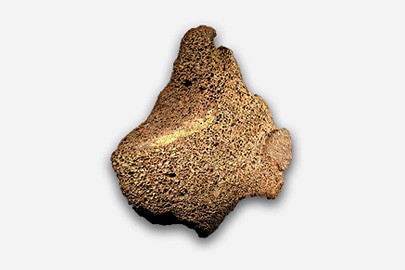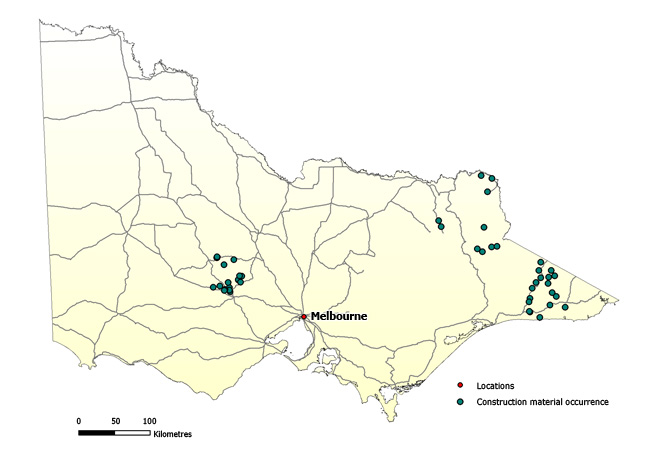Construction materials

The term ‘construction materials’ is used here to cover all low-cost, raw, consolidated and unconsolidated rocks that are extracted in large tonnages and used primarily for construction that is vital to the State’s development.
They include rippable and non-rippable rock, gravel, and sand. Some materials that could be included here have been covered individually if they have other important uses or are of higher value than other construction materials.
Extraction of construction materials in Victoria is an important industry in monetary terms and provides an essential source of materials for the further development of the State.
Its monetary value of about $300 million per annum ranks with that of brown coal and far exceeds the combined value of all other minerals produced in Victoria. Production continues to grow as demand for construction materials increases.
Statistical information on production is provided in Victoria's minerals, petroleum, and extractive industries statistical reviews.
Hard rock
Hard rock refers generally to rock that is blasted in quarries, and commonly crushed and screened before use. Approximately 24 million tonnes of hard rock are quarried each year in Victoria.
Hard rock is used mainly for:
- aggregate for road surfaces
- aggregate in Portland cement concrete and asphaltic concrete
- crushed rock for construction of road base and sub-base
- ballast for railway construction and maintenance
- filter and bedding materials for construction of dams and pipelines
- armour stone for marine breakwaters and facing for dam embankments.
Viable crushed rock products must be durable, strong, and abrasion resistant.
The main rocks used for construction are (in decreasing order of tonnages consumed):
- Newer Volcanics: 38 quarries provide good quality basalt for crushing and use on roads. Some of the basalt is affected by clay weathering.
- Older Volcanics: fresh basalt is used in the production of concrete, asphalt, and surfacing aggregates.
- Granite: widespread in upland areas of Victoria; use of granite in construction has increased markedly over the last 10–15 years.
- Felsic volcanics including rhyolite and rhyodacite: these rocks usually produce strong and appropriate shaped aggregate particles when crushed.
- Metamorphic rocks: hornfels and schist are extracted throughout the state, but can produce flaky particles that are not ideal for use as construction materials.
- Sedimentary rock: used as marginal quality road-making material, but lacks the mechanical strength of the above rock types.
Rippable rock, natural gravel and sand for road making
This group of construction materials includes consolidated rock (e.g. sandstone, shale, schist, hornfels), colluvial deposits, pyroclastic deposits (scoria and tuff), alluvial deposits, and residual soils and calcretes. Gravel is composed of mineral or rock particles greater than 2 mm in diameter and sand of particles within the size range 0.06–2.00 mm.
Construction sand
The most common uses for sand in Victoria are as follows.
- Well-graded sand (i.e. particle size ranging from fine to coarse and free of silt and clay grains) is used as fine aggregate in Portland cement concrete.
- Fine-to-medium grained sand (preferably with low fines content to increase workability) is used in mortar.
- Fine sands are used in plaster.
- Sand of various qualities and grain sizes is also used
- in the paving industry, for road-base construction, and in asphaltic mixes,
- as packing material under paving and concrete slabs,
- as trench backfill around pipes and underground tanks, and
- as an additive to improve the cohesion and workability of hard crushed rocks (e.g. granitic sands).
Specialised uses for some Victorian sands with specific characteristics are in the manufacture of glass and fibreglass, in moulds for metal castings, in sand blasting, and as filtering media.
View the full list of industrial minerals.
Further information
Industrial minerals and rocks of Victoria – Geological Survey of Victoria Report 102
Geology of Victoria – Geological Society of Australia
Learn about the Extractive resources strategy
Maps
To create your own maps online and in real time, plan exploration activities by viewing land status, or download GIS data to add to your own maps, visit GeoVic.

Page last updated: 19 Aug 2025